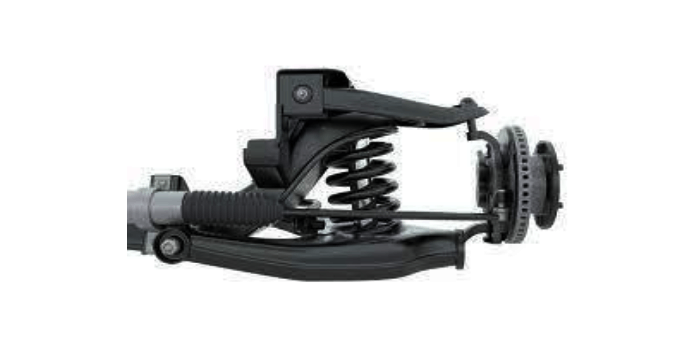Find Your Car Parts Instantly
- Best Price Guarantee Buy with confidence because you aren't getting a better price than this.
- Free Shipping Enjoy the luxury of free shipping on orders above $299.
- A Grade Quality Used Car Parts
Avail the best OEM Auto parts & components that are just as new - Our Friendly Parts Specialist will get you what you need !
Rear Independent Suspension Assembly

Almost all the advantages of independent front suspension apply to independent rear suspension, but the most important among them is the reduction of unsprung weight. The final-drive unit and the brakes contribute maximum to the unsprung weight. Therefore, installation of inboard' brakes on a frame-mounted final drive provides a reduction in unsprung weight of around 50 percent. Following are the brief description of independent rear suspension
systems. Parallel Link System.In this layout two wishbone-shaped links, which connect the wheels to a backbone-type frame, are mounted transversely. Torsion bars are fitted longitudinally and are connected with the lower wishbone. Wide-angle universal joints are used to transmit drive from the final drive.
.(571) 541-9171
Swinging Arm System.
The trailing arm system provides an alternative method of mounting the wheels. Either a spring, shown in the figure or a torsion bar, acting at the pivot is incorporated. One popular lighter design uses a rubber spring; otherwise the metal spring shown in the figure is commonly used.
Swinging Half-axles.This arrangement incorporates two axle tubes, which are jointed to the final-drive housing so that the wheels are permitted to rise or fall (Fig. 22.66). Universal joints are installed at the center of each axle joint to allow for the change in drive angle.
Transverse Link and Coil Springs.This layout or similar is used on some models of the car. The road wheel is positioned in the transverse plane using a tubular suspension link at the bottom and a drive shaft at the top. Non-plunge universal joints are used at each end of the drive shaft for movement of the shaft. A longitudinally mounted radius arm connects the wheel end of the link to the vehicle body and provides longitudinal stiffness and driving thrust.
Transverse link and coil springs.Both driving torque and braking torque reactions are absorbed by the final drive housing, which is bolted to a sub-frame and to which the complete rear suspension is built. During deflection of the springs a variation occurs in the rear wheels camber angle as the two links are of different length. The shims, fitted between the brake disc and the universal joint flange, are used to adjust the camber angle.
(571) 541-9171
Semi-trailing Arm and Coil Spring.
This arrangement uses a wishbone-shaped suspension arm fixed diagonally on to a sub-frame which carries the final drive housing and also supports the rear hub. This arrangement of the suspension arm permits the wheel to be supported both laterally and longitudinally Semi-trailing arm and coil spring.
Driving torque reaction is transferred from the final drive housing to the sub-frame. The construction arrangement, like in similar systems, prevents the tendency of the right-hand rear wheel to lift during hard acceleration. Braking torque and driving thrust are taken by the suspension arms.
Rubber is commonly used at the pivots of the suspension arm and for mounting the springs and sub-frame to the body. This provides flexibility, reduces vibration and noise, and avoids the use of lubrication. For adjustment of wheel alignment (toe-in), one mounting of each suspension arm is incorporated with either eccentric adjusters or shims.
Transverse Link and Strut.This layout for independently mounting each rear wheel is similar to the basic construction of the MacPherson independent front suspension systems. The stub axle is rigidly fixed to a long vertical strut that incorporates the suspension damper. A transverse link, in the form of a wishbone or arm, controls the wheel track. A longitudinal tie bar links the lower end of the strut with the car body to provide a stable three-point mounting for the suspension. This tie bar also resists the rearward movement of the road wheel. The helical spring can be mounted either on the transverse wishbone or around the strut in true MacPherson style.
To improve comfort, some systems use a spring having coils of differing radius to provide a variable rate. During compression of this spring, the larger diameter end-coils close up so that the effective working length of the spring decreases, thereby stiffening the suspension. In this system, like many of other independent rear suspension systems, the camber angle changes as the wheel is deflected. This feature helps to alter the tyre’s cornering power, thereby excellent handling characteristics of the car can be obtained through proper design.
Strut-type.Rubber is used at all mounting points, so slight deflection of the suspension layout causes a change in wheel alignment. To compensate for this change, it is customary to set the rear wheels with a small amount of toe-in. It is important to replace all washers and spacers, if removed, on non-adjustable layouts. Other layouts often incorporate an eccentric bolt on one of the track control arms.
(571) 541-9171